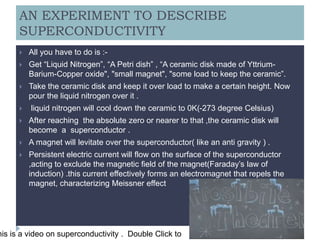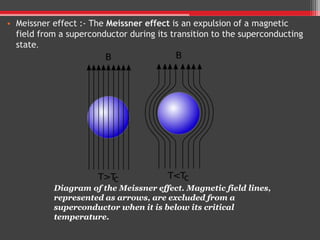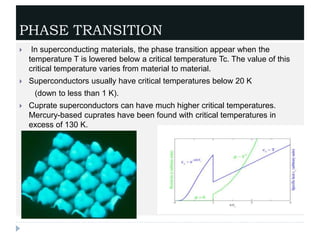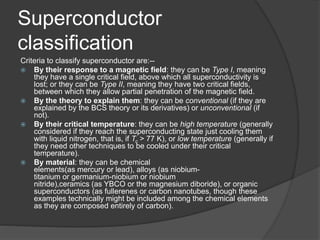Superconductivity is a phenomenon that occurs in certain materials below a critical temperature where they show zero electrical resistance. It was discovered in 1911 by Heike Kamerlingh Onnes who found that mercury's resistivity disappeared below 4K. Superconductors expel magnetic fields, known as the Meissner effect. An experiment is described where a ceramic disk made of yttrium-barium-copper oxide is cooled below its critical temperature using liquid nitrogen, causing it to become a superconductor and levitate a small magnet due to persistent electric currents. Theories like the BCS theory and London theory were developed to explain the microscopic mechanisms of superconductivity.

















